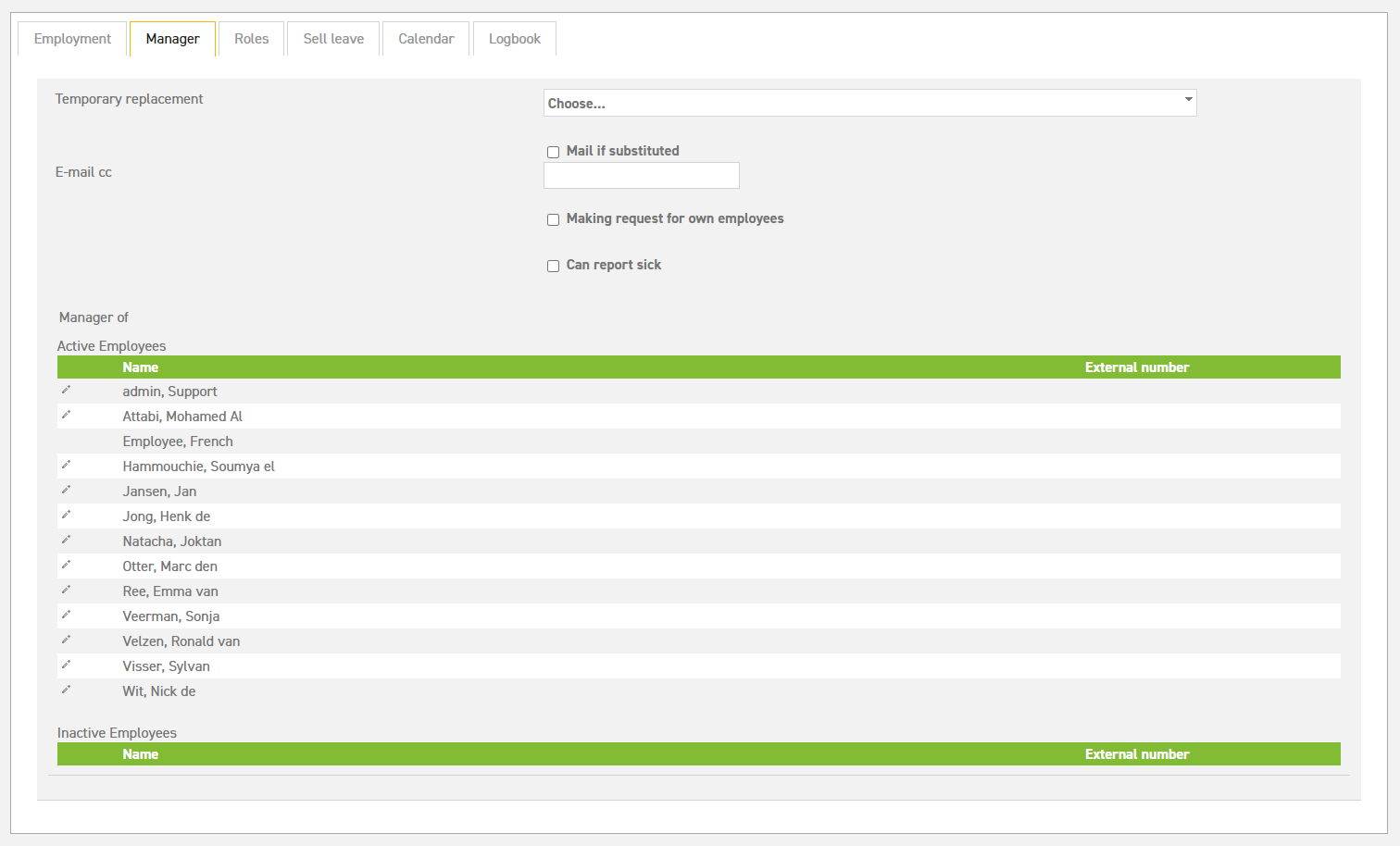Temporary Replacement [EP 3]: The Ultimate Guide To Managing Workforce Gaps
In today's fast-paced world, managing workforce gaps through temporary replacement has become a critical strategy for businesses to stay competitive. Whether it's due to employee leaves, unexpected absences, or short-term projects, understanding how to effectively implement temporary replacement solutions is essential for organizational success.
As companies face increasing challenges in maintaining productivity, temporary replacement strategies offer a practical solution to bridge workforce gaps. This approach not only ensures business continuity but also provides opportunities to evaluate potential hires and test new talents.
This comprehensive guide will explore everything you need to know about temporary replacement solutions, including best practices, tools, and strategies to implement them effectively. Whether you're a business owner, HR professional, or team manager, this guide will equip you with the knowledge to make informed decisions.
Read also:Anja Ravello The Rising Star Whorsquos Redefining Fashion And Beauty Standards
Table of Contents
- What is Temporary Replacement [EP 3]?
- Importance of Temporary Replacement
- Key Benefits of Temporary Replacement Solutions
- Types of Temporary Replacement
- How to Implement Temporary Replacement Strategies
- Best Practices for Temporary Replacement
- Tools and Technologies for Temporary Replacement
- Challenges in Temporary Replacement
- Case Studies: Success Stories
- Future Trends in Temporary Replacement
- Conclusion
What is Temporary Replacement [EP 3]?
Temporary replacement refers to the process of hiring employees on a short-term basis to fill workforce gaps. This strategy is particularly useful when organizations face unexpected absences, employee leaves, or seasonal workload increases. According to a recent report by the Bureau of Labor Statistics, the temporary help services industry employed over 2.9 million people in 2022.
Temporary replacement solutions are designed to provide flexibility and scalability to businesses. By leveraging this approach, organizations can maintain productivity without the long-term commitment of hiring permanent employees. The term "EP 3" often refers to specific episodes or stages in workforce management strategies, emphasizing the importance of structured planning.
Why Temporary Replacement Matters
- Ensures business continuity during workforce gaps
- Provides flexibility to adapt to changing business needs
- Allows for cost-effective workforce management
Importance of Temporary Replacement
In today's dynamic business environment, the importance of temporary replacement cannot be overstated. Organizations face numerous challenges, including employee turnover, unexpected absences, and fluctuating workloads. Temporary replacement solutions address these challenges by providing a flexible workforce that can be scaled up or down as needed.
Research by Deloitte indicates that companies using temporary replacement strategies experience a 20% increase in productivity compared to those relying solely on permanent employees. This highlights the strategic value of incorporating temporary workforce solutions into overall HR planning.
Impact on Business Success
- Reduces downtime during workforce gaps
- Enhances organizational agility
- Improves overall workforce efficiency
Key Benefits of Temporary Replacement Solutions
Implementing temporary replacement solutions offers numerous benefits to organizations. These solutions not only address immediate workforce needs but also contribute to long-term strategic goals. Below are some key advantages:
- Cost Efficiency: Temporary employees eliminate the need for benefits and long-term commitments, reducing overall labor costs.
- Flexibility: Organizations can quickly scale their workforce up or down based on demand.
- Access to Diverse Talent: Temporary replacement allows companies to tap into a broader talent pool, bringing in specialized skills as needed.
A study by Glassdoor reveals that companies using temporary workers experience a 15% increase in innovation due to the diverse perspectives brought by short-term employees.
Read also:Kim Junki Net Worth
Types of Temporary Replacement
Temporary replacement solutions come in various forms, each tailored to specific organizational needs. Understanding these types is crucial for effective implementation:
1. Short-Term Contract Workers
These employees are hired for a defined period, typically ranging from a few weeks to several months. They are ideal for covering employee leaves or addressing seasonal demands.
2. Temporary-to-Permanent Employees
This approach allows organizations to evaluate potential hires before committing to permanent employment. It provides a risk-free way to test employee skills and cultural fit.
3. Freelancers and Gig Workers
Freelancers and gig workers offer specialized skills on a project basis. They are particularly useful for short-term projects requiring specific expertise.
How to Implement Temporary Replacement Strategies
Successfully implementing temporary replacement strategies requires careful planning and execution. Below are the key steps to follow:
- Identify Workforce Gaps: Conduct a thorough analysis of current staffing needs and future demands.
- Define Roles and Responsibilities: Clearly outline the roles and responsibilities of temporary employees.
- Partner with Reputable Agencies: Collaborate with staffing agencies to access a qualified talent pool.
- Onboard Effectively: Ensure smooth onboarding to integrate temporary employees into the team quickly.
According to a report by PwC, organizations that partner with reputable staffing agencies experience a 30% higher success rate in temporary replacement initiatives.
Best Practices for Temporary Replacement
To maximize the effectiveness of temporary replacement strategies, consider the following best practices:
- Set Clear Expectations: Communicate expectations and objectives to temporary employees from the outset.
- Provide Adequate Training: Offer necessary training to ensure temporary employees can perform their roles effectively.
- Foster Inclusivity: Treat temporary employees as valued members of the team to enhance productivity and morale.
Research by Harvard Business Review highlights that organizations fostering inclusivity among temporary workers experience a 25% increase in employee engagement.
Tools and Technologies for Temporary Replacement
Technology plays a crucial role in managing temporary replacement solutions. Leveraging the right tools can streamline processes and improve outcomes:
1. Applicant Tracking Systems (ATS)
ATS platforms help manage candidate applications and streamline the hiring process, making it easier to find qualified temporary employees.
2. Workforce Management Software
These tools enable organizations to track employee schedules, performance, and attendance, ensuring efficient workforce management.
3. Communication Platforms
Tools like Slack and Microsoft Teams facilitate seamless communication between temporary employees and permanent staff, enhancing collaboration.
Challenges in Temporary Replacement
While temporary replacement solutions offer numerous benefits, they also present challenges that organizations must address:
- Integration Issues: Temporary employees may struggle to integrate into existing teams and workflows.
- Quality Concerns: Ensuring the quality of work from temporary employees can be challenging.
- Cost Management: Balancing the costs of temporary replacement with budget constraints requires careful planning.
A report by McKinsey suggests that organizations can overcome these challenges by investing in robust onboarding processes and continuous performance monitoring.
Case Studies: Success Stories
Several organizations have successfully implemented temporary replacement strategies, achieving significant results. Below are two notable examples:
Case Study 1: TechCorp
TechCorp, a leading technology firm, utilized temporary replacement solutions to address a surge in project demands. By partnering with a staffing agency, they were able to onboard skilled professionals quickly, resulting in a 40% increase in project completion rates.
Case Study 2: RetailChain
RetailChain implemented temporary replacement strategies during the holiday season to meet increased customer demand. Their approach led to a 35% improvement in customer satisfaction scores and a 20% increase in sales.
Future Trends in Temporary Replacement
The future of temporary replacement is shaped by emerging trends and technologies. Key trends include:
- Remote Work Opportunities: The rise of remote work has expanded the possibilities for temporary replacement, allowing organizations to hire talent globally.
- Artificial Intelligence: AI-powered tools are enhancing the efficiency of temporary replacement processes, from candidate screening to performance monitoring.
- Skill-Based Hiring: Organizations are increasingly focusing on skills rather than traditional qualifications when hiring temporary employees.
According to a report by Gartner, by 2025, 70% of organizations will prioritize skill-based hiring for temporary replacement solutions, emphasizing the shift toward competency-driven workforce management.
Conclusion
Temporary replacement solutions offer a strategic approach to addressing workforce gaps and enhancing organizational agility. By understanding the importance, benefits, and challenges of temporary replacement, organizations can implement effective strategies to drive success.
We encourage you to take action by evaluating your current workforce needs and exploring temporary replacement solutions. Share your thoughts and experiences in the comments below, and don't forget to explore other insightful articles on our website.
![Temporary Replacement [EP 2] The Essential Guide](https://i.ytimg.com/vi/p4vp056-Suo/maxresdefault.jpg)

